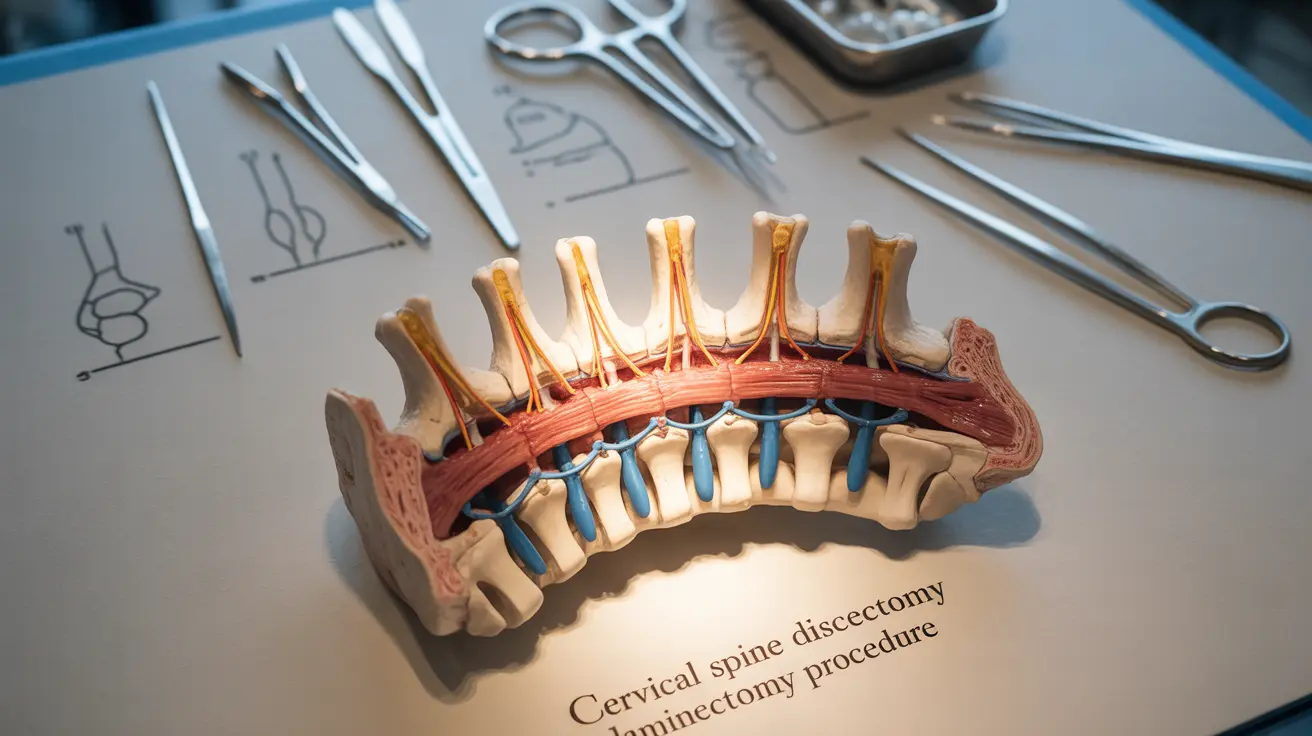When chronic back pain and nerve compression affect your quality of life, spine surgery might become necessary. Two of the most common surgical procedures—laminectomy and discectomy—offer different approaches to relieving spinal pressure and addressing specific back conditions. Understanding these procedures can help you make informed decisions about your treatment options.
Both surgeries aim to alleviate nerve compression in the spine, but they target different anatomical structures and address distinct problems. Let's explore these procedures in detail, including when each is recommended and what you can expect from recovery.
Understanding Laminectomy: The Procedure and Its Purpose
A laminectomy involves removing the lamina—a portion of the vertebral bone that forms the back wall of the spinal canal. This procedure creates more space within the spinal canal, relieving pressure on compressed nerves and addressing conditions like spinal stenosis.
- Relieving pressure on spinal nerves
- Reducing chronic back pain and leg pain
- Improving mobility and function
- Addressing spinal stenosis symptoms
Discectomy: Targeting Herniated Discs
A discectomy focuses specifically on removing damaged disc material that has herniated or protruded and is pressing on spinal nerves. This procedure is typically recommended when conservative treatments haven't provided adequate relief from herniated disc symptoms.
- Removal of herniated disc material
- Relief of nerve root compression
- Treatment of radiating pain and numbness
- Improvement in leg weakness caused by nerve compression
Minimally Invasive Options and Modern Techniques
Advanced surgical techniques have revolutionized both procedures, offering patients less invasive options with potentially faster recovery times. Minimally invasive approaches typically involve smaller incisions, less tissue damage, and improved surgical precision.
Microdiscectomy Advantages
- Smaller incisions
- Less muscle trauma
- Faster recovery time
- Reduced post-operative pain
Minimally Invasive Laminectomy Benefits
- Targeted bone removal
- Preservation of spinal stability
- Quicker return to daily activities
- Lower risk of complications
Recovery Expectations and Outcomes
Recovery times vary depending on the specific procedure and individual factors. Generally, patients can expect:
- Hospital stays of 1-3 days
- Return to light activities within 2-4 weeks
- Full recovery within 2-3 months
- Gradual improvement in symptoms over time
Frequently Asked Questions
What are the main differences between laminectomy and discectomy surgeries for back pain? Laminectomy removes part of the vertebral bone (lamina) to create more space in the spinal canal, while discectomy removes herniated disc material that's pressing on nerves. Laminectomy addresses spinal stenosis and general nerve compression, while discectomy specifically targets herniated disc problems.
When is a laminectomy recommended instead of a discectomy for spinal nerve compression? A laminectomy is typically recommended when spinal stenosis causes nerve compression throughout the spinal canal, or when multiple levels of the spine need decompression. It's also preferred when the compression isn't specifically caused by disc herniation.
How do minimally invasive laminectomy and microdiscectomy procedures affect recovery time and outcomes? These minimally invasive approaches typically result in shorter hospital stays, faster recovery times, and less post-operative pain compared to traditional open surgeries. Patients often return to normal activities sooner and experience fewer complications.
What symptoms indicate that someone with a herniated disc might need a discectomy? Key indicators include persistent leg pain, numbness or weakness that hasn't improved with conservative treatment, difficulty walking, and progressive neurological symptoms affecting bladder or bowel function.
Can laminectomy and discectomy be performed together, and what conditions require both surgeries? Yes, these procedures can be combined when patients have both spinal stenosis and herniated discs causing nerve compression. This combination approach might be necessary for complex cases where multiple sources of nerve compression exist.




